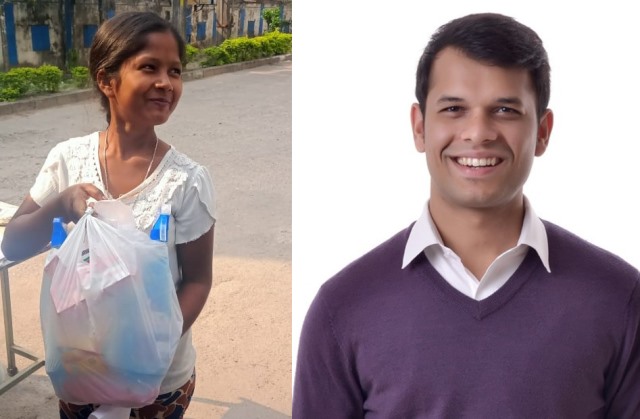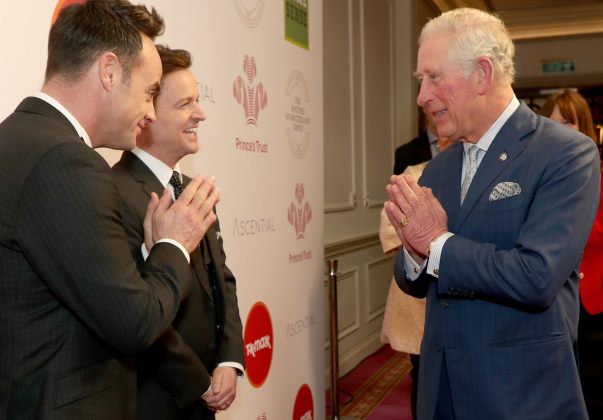Most teachers believe even though there is no match to in-person offline classes, online teaching is the need of the hour to maintain social distancing in these troubled times.


Most teachers believe even though there is no match to in-person offline classes, online teaching is the need of the hour to maintain social distancing in these troubled times.

Shiv Bansal, 25, a finance professional in Bengaluru, went to Siliguri to look after his parents when Covid-19 struck. In a week, he launched a start-up
I was born and brought up in Siliguri, West Bengal. But after my honours graduation from Shri Ram College of Commerce, Delhi University, I took up a job in Bengaluru with an investment bank. When the Covid-19 broke out and a lockdown was imposed, I lost no time in travelling to my native place to see my parents are not inconvenienced during this crisis; both are above 60.
I had been asked to work from home, and therefore Siliguri was as good as Bengaluru with the help of an internet network. Being at home for three days during the lockdown, I realised that procuring essential groceries was a difficult task in towns like Siliguri.
This happened when my parents asked me to get groceries from the local kirana store. Used to online delivery apps, I looked for home delivery services in my location on the Internet but, to my surprise, I couldn’t find any.
I made a list of things to buy and went to the local grocery store. There I found myself surrounded by a small crowd of buyers who had laid seize to the small shop, completely defeating the purpose of social distancing and putting the buyers at a contagion risk.
This is where the idea of a hyperlocal home delivery system popped up in my head. I searched the internet and news sites to find out that multiple delivery agents in Siliguri had been dealing with unemployment due to reduced food orders. Many were contemplating going back to their villages.
This is where I saw an opportunity. The skilled manpower was available and so was the demand for home delivery. I only needed to setup a network with logistics. I seized the moment.
I pulled together a five-member team and sorted out operations. I named this start-up Janta Delivery, a hyperlocal doorstep service that would take care of the last-mile logistics of groceries and other essentials.
In small towns, the network of kirana stores is very strong. People have confidence in the quality of products supplied by their selected stores in their locality. Hence, to source our supply we collaborated with a few famous stores of the town who had the goodwill of the residents here in terms of the quality.
The model is quite simple. Customers place their order by sending a WhatsApp text on a number (+91-76022-50045, in our case) or through our website. Once the order is received, it is sent to the respective store and our team coordinates with them for order preparation. Once the order is prepared, the nearest delivery agent is informed to pick up the order along with the bill and pays for it upfront.
The agent then reaches the customer, hands over the bill made by the network store, receives the payment along with a ₹50 delivery charge and hands over the ordered items to the customer. All the coordination is done over phone calls or Whatsapp texts.
We are currently doing more than 40 orders per day. We expect this to increase as the word spreads and those who wish to stay indoors during the pandemic join our customers list. The best part is I can handle the team along with my assigned work-from-home assignments.
No, so far I have not thought about any future plans once the things return to normal. But, right now my team is focused on keeping the current operations smooth so that we can meet the needs of people in Siliguri and keep them safe. The work is monetarily rewarding as well as fulfilling. My aspiration in life is to use my skills and experience to solve problems that improve people’s lives. I love plugging existing gaps to build sustainable solutions.

When Indians first arrived in numbers in United Kingdom, there was general amusement that they avoided hand shaking. Now, hand shaking is de rigour in India. Indians have brought western habits into India instead. Coronavirus, interestingly, is bringing back the practice of social distancing, a practice that was characteristic of Indians before modern times. It may well reintroduce an Eastern cultural practice throughout the world.
Another Indian habit that amused Europeans was the constant hand washing after eating, or touching anything. Clearing the mouth with a quick gargle or rinse after every meal was also common. Handwashing is the other main advice to reduce coronavirus spread.
Social distancing has been part of almost all Eastern cultures. Rarely was intimacy expressed in public in the form of hugging, hand shaking or otherwise. In Japan, people greeted each other by bowing as they still do. Maintaining a healthy distance between individuals is a Japanese cultural practice. The Chinese too traditionally bowed as greeting.
Pranaam, or folding hands with a bowed head, was the traditional Indian greeting. It is still the practice but for some reason it is immediately followed by a hand shake. In some parts of India, especially the North, it is often followed by a hug between close friends, relatives and between adults and children especially if they haven’t met for some time.
When did the hug become part of cultural practice? It is intriguing because there isn’t much evidence of it in historical accounts. The handshake certainly started with the British arrival. Early British envoys maintained Indian practices of either bowing, or Pranaam. But as colonialists settled in, handshake became a common form of greeting among the western-educated Indians and the elite. Now it is a universal Indian practice.
Why eastern practices avoided intimacy may have many reasons. Western scholars often blamed caste as one culprit, pointing out that intimacy between higher and lower castes was forbidden. Others suggested a system of general hierarchy. However, even people of same caste and similar hierarchical status avoided intimate greetings. Thus these theories do not stand scrutiny.
Perhaps the habit of avoiding intimacy in public may have arisen from similar pandemics in Indian history that has now gripped the world. The world and Indian history has had quite a few pandemics. Cholera in ancient times and the Bubonic Plague are well known. Smallpox had swept India in ancient times as well (shitala). Bubonic plague is estimated to have killed some 25 million people in India and China around 1340s. The 1817 Cholera epidemic claimed hundreds of thousands of Indian lives and spread to other countries.
Earlier around 540 AD, the so called Justinian Plague had also claimed nearly 15% of world population in Europe and Asia, if not more. The plague had claimed lives both in China and India in large numbers.
It is possible that these experiences had led to the precautionary habit of social distancing in Indian and other Eastern civilisations. In South East, the practice is a combination of Pranaam and bowing, such as in Thailand and Cambodia.
Although some epidemics, such as plague, are carried by fleas and are bacterial and therefore social distancing is unlikely to make much difference, others such as small pox and influenza are restricted by social distancing.
Coronavirus has also spread with speed in countries like Iran. Its possible because greeting with cheek-to-cheek touch is a common form of greeting in the Middle East between equals. In others, touching the upper arms and forming gestures of cheek to cheek greeting is common. Both reduce the distance between individuals and introduce an element of intimacy that is a free ticket for transmission for a pandemic like coronavirus.
Social distancing is the first line of defence now being promoted across the world in corona virus pandemic. Out goes the hand shake. In comes elbow for the time in western countries. But why not Pranaam with folded hands and a healthy distance between the greeters. Prince Charles did that in the Commonwealth meet.
So out also goes the Modi hug and in comes the traditional Pranaam. It seems Corona virus has given an opportunity for Indian culture to become universalised in one form at least. Bowing in Chinese and Japanese style may be too much for most of the world. But Pranaam with a reasonable distance isn’t difficult.
It will be interesting to see what happens to the Maori nose to nose greeting. If any executive class passage can be offered to Coronavirus, this is one that beats all.
Of course once a person gets corona virus, it is western technology to keep the lungs going that will aid recovery. Many traditional herbal doctors and ayruvedics are claiming treatments options, but there is no evidence anything works other than their bank balances.
Isolation is another strategy for these forms of pandemics. Isolation and bed rest were the treatment of choice in pre vaccine days in India. People lived in smaller villages rather than big cities. Before the current craze for mega cities, over 80% pf Indians lived in manageable villages. Modern mega cities offer unbound opportunity to a virus such as Corona virus.
It seems every few decades a pandemic sweeps through the world, decimating the population. So far it seems epidemiological knowledge and drastic actions have contained the deaths in China. It remains to be seen what happens when coronavirus invades western countries that put greater emphasis on profits than social welfare such as USA. The cuts in social welfare in the UK along with Brexit may now reveal the cracks. Generally it is thought that the medical systems in both countries will not be able to cope with as much speed and efficiency as China.
Irony will be if both countries, USA and UK, ask China for assistance to build facilities and protective measures. Whereas it takes a year to build a hospital facility in most western countries, China built isolation facilities with machine etc within 2 weeks. Who else has the capacity to do this?
However, it is India that now worries most epidemiologists. The infrastructure, the availability of ITU beds, lung machines, testing facilities will be a challenge that will test the Modi Government. Once it starts spreading, India’s capability will be truly on line. A hope is that Indians may have greater immunity than others.
In the absence of vaccines and other antiviral drugs for this, the two human practices that now are effective in reducing the incidence of spread is social distancing and hand washing. Better bring Pranaam back into India and get rid of the hand shake and restart washing hands frequently even after eating with knives forks and spoons. This virus may go away after a few months, but new ones will emerge. A cultural change in the way we greet and maintain personal hygiene and going back to tradition could be more effective than anything else.
It seems the ancients had evolved practices with care and from experience. Pranaam to them and to all our readers.
When you visit any web site, it may store or retrieve information on your browser, mostly in the form of cookies. Control your personal Cookie Services here.